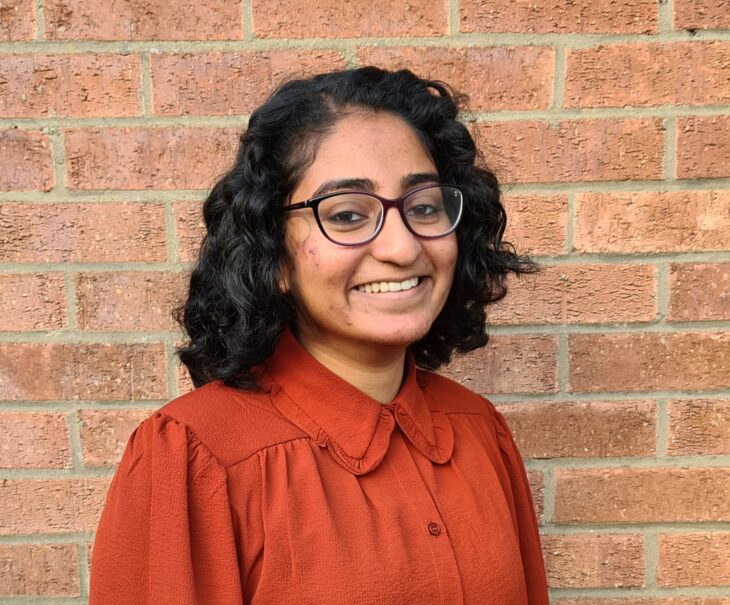Close
- About Us
- Programme
- How to Apply
November 2022

Difference is daunting.
There are many differences and mine is that I am not British. I am an Indian who grew up in the UAE. This was not a problem by itself. However, I had decided to train to teach Secondary English.
I would be a foreigner teaching English to the English.
The humour was not lost on me, nor were the apprehensions.
However, I was lucky enough my main placement school is also where I’d gotten to work at as an LSA for a few months before my training began. From the very first day my school made me feel like I had always been part of the school community. From my days since I have realised why.
My school hosts a diverse community of both staff and students. Last year, 56% of the students were from ethnic groups, and English was second language to 31% of the student populace. My school’s diversity has been channelled into an attitude of inclusivity that permeates every interaction that happens here. In response to the Basingstoke & Deane Inclusions and Diversity Partnership launched in 2021, the school set up a Diversity Lead. Under her guidance, around 60 students signed up to be EARAs – Equality and Rights Advocates. They were trained to challenge and be upstanders in a gentle way. They were also responsible for training other students formally (assemblies) and informally (personal conversations). The EARAs proposed and piloted workshops for KS3 students on LGBTQ+, neurodiversity, and race. Historically, students also led a sign language workshop that proved quite popular.
School students support all forms of diversity because their own uniqueness is celebrated here. I remember being in a history class last year when they were learning about Black history in the UK. Whilst Black history in the US has become popular knowledge, the UK perspective was entirely new to me; together with the students, I soaked up this new angle in fascination. I found out later that this lesson was a result of the school wanting KS3 curriculum to reflect the histories of all its students. This commitment to year-round inclusivity made the schools Black History Month celebration so much more sincere.
My school is also twinned with a school in Cameroon, by the Portsmouth Diocese to which the school belongs. When it was safer, staff and students had gone over to volunteer; now the school supports the college through fundraising activities. On Diversity Day last year, staff and students were encouraged to come dressed in traditional attire and to take part in an evening celebration of all the ethnicities in the school. This mufti day was made meaningful when all staff and students donated a pound each to be sent off to Bamenda.
Being a single faith school, my school often faces a question from the outside about how inclusive it is of other faiths. Those on the inside, however, have the answers. Before the pandemic, my school hosted a student-led interfaith question time. The students were supported in preparing their answers by the RE department, yet they took the lead in bringing the answers to the student populace. The school also hosts an annual multi-faith trip where Year 8 students visit a gurdwara, a mosque, and a mandir. They come back with their textbook knowledge improved by a real-world awareness of how different faiths practice their beliefs. This awareness is strengthened by the practical steps the school takes to accommodate all faiths. A prime example would be the student-led Ramadan assemblies that remind students to be supportive of their fasting peers. Staff are also asked to make allowances for fasting students and the school shifts other celebrations to ensure they do not miss out. A group of Muslim students make regular use of an RE space to pray during lunchtimes and plans for a Muslim prayer space next to the chapel are soon to be realised.
It has been heart-warming to hear parents talk about how this level of support makes their children feel safe at school. In addition to racial and religious diversity, the school also supports children with additional needs. Last year this was 8% of all students. As an LSA, I had been in classes with many of these students and it was delightful to see how the other children wholeheartedly accepted the SEND children. When the SEND children behave differently or are given additional support, none of the other children bat an eyelid. I have heard a SEND child screaming outside and I have seen my class calmly continue with their work; no one wanted to look out the window or even seem surprised. This to me showed true inclusivity – not just about understanding differences and accepting them, but having differences normalised.
Here at school, it is perfectly normal for me to be different.
Here at school, it is perfectly normal for me to be teaching English.
Here at school, I can grow and learn and the only thing that affects my ability to succeed is the amount of work I put in.
I write this as a student teacher, but I write this echoing the sentiments of hundreds of children who walk in each day. I write this having been cherished and supported by all members of staff. I have only been here for about half a year, but I have never felt so accepted anywhere else. The ethos of the school guides the community in respecting the innate dignity of all human beings. The school way is to ‘walk with each other’ and this is practiced by everyone from SLT to support staff to students.
Amrutha Antony – English Trainee Teacher 2022/23
Share article